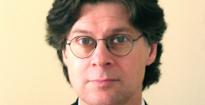York: Big Labor Couldn't Match Glenn Beck
 Byron York writes:
Byron York writes:
The nation's biggest, richest and most powerful labor unions spent months organizing the "One Nation Working Together" rally at the Lincoln Memorial Saturday. With midterm elections approaching, they hoped to put on a show of political strength to energize struggling Democratic candidates. But even after giving it everything they had, they still weren't able to draw as many people as Glenn Beck's "Restoring Honor" rally in August. Why not?
Because the labor movement is shrinking, aging and divided. Because the best program its leaders (and co-sponsors at the NAACP) could put together was one featuring Al Sharpton, Jesse Jackson, Richard Trumka, Van Jones and Harry Belafonte. And because George W. Bush is no longer in the White House. Put those factors together, and Big Labor's big march fell flat.
First, the shrinking part. According to 2009 figures from the Labor Department, 12.3 percent of American workers belong to a union -- down from 20.1 percent in 1983. In real numbers, there are 15.3 million union members now; back then, when the country's population was significantly smaller, there were 17.7 million.
Next, aging. The Labor Department figures show there are more union members between 55 and 64 than in any other age group. The lowest rate of union membership is among younger workers.
Then, divided. In January, the Labor Department reported that for the first time in history, there are more union members in the public sector (7.9 million) than there are in the private sector (7.4 million). That's despite the fact that there are five times more workers in the private sector than in federal, state, and local governments. In percentage terms, just 7.2 percent of private-sector workers belong to a union, while 37.4 percent of public-sector workers are unionized.
In broad terms, the public-sector unions lean farther left, while the private-sector unions still count among their number old-fashioned blue-collar moderates who don't necessarily want to pay higher taxes to hire more public-sector employees. "The differences between them aren't violent, angry, screaming differences," says Fred Siegel, a scholar in residence at New York's St. Francis College and a fellow at the Manhattan Institute, "but they're important differences."
What does a tired and aging movement do? It puts on a program with tired and aging leaders. Sharpton has long ago worn out his welcome among anyone beyond the hard-core Democratic base; the same is true for Jackson. The 83-year-old Belafonte's appearance at the rally was impressive, but mostly as a vision from an earlier era. Trumka's appeal does not go beyond the labor movement, and the young gun in the group, Van Jones, left the White House last year amid scandal. It wasn't exactly an all-star lineup.
Click here to read more.

